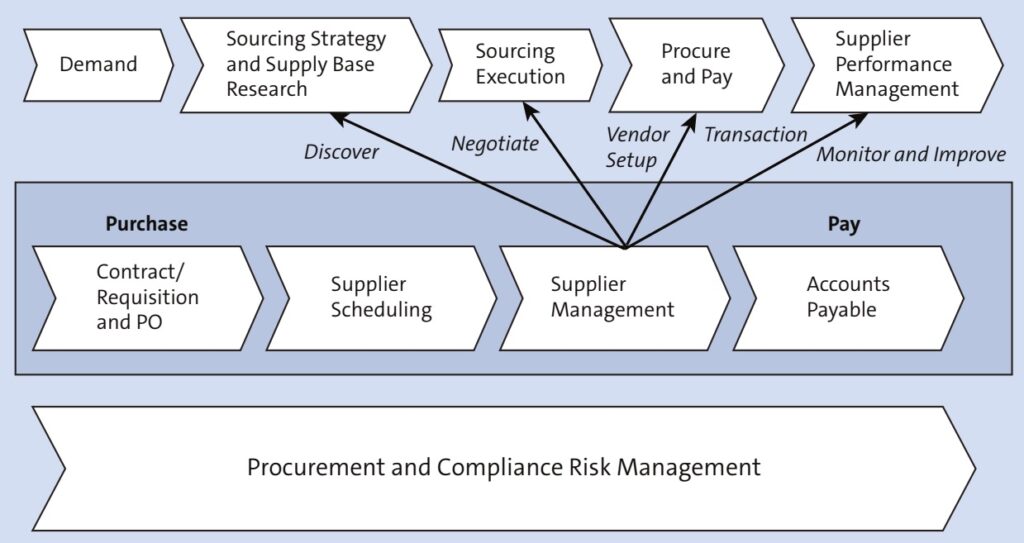This article will walk you through the issues and challenges related to supplier performance risk systems. You will also learn the benefits of using an all-inclusive, cloud-based solution for better and efficient management of all of your supplier performance issues and risk mitigations.
Strategic and procurement managers often tend to undermine the importance of supplier performance and risk management compared to other procurement areas such as sourcing, contract and spend management. An MIT survey identified that supplier performance issues contribute to approximately two-thirds of all the procurement risks, as 77% of the survey participants indicated.
A healthy relationship with suppliers while continuously monitoring and improving their performance can give you a significant edge over the competitors. Proactive supplier risk management can also help you drive your business more efficiently in challenging situations and lower risk exposure.
Table of Contents
What is Supplier Performance Risk System?
You may need to deal with scores of issues every day related to the performance of your business suppliers. For instance, the raw materials may fail to meet quality standards, or a shipment may miss the deadline causing a significant backlog for your production department. And, that is not all. External factors from legal, political, or economic climate may also hamper the supplier’s performance in the long run, which is difficult to anticipate if you do not have a systematic risk and performance management approach in place.
The supplier performance risk system is a systematic business management approach to analyze and evaluate the performance of your suppliers. As a result, you aim to improve throughout all the areas of cost reduction and risk mitigation through systematic and continuous monitoring of suppliers’ performance while adapting to the dynamic business climate.
What Are the Strategies to Manage Supplier Performance Risk?
Supplier lifecycle management is a formal term to express the entire management process with your business, from start to finish. It starts with supplier onboarding and finishes with offboarding. In between, there are two crucial stages of supplier management known as supplier performance management and supplier risk management. Managing the supplier lifecycle, performance, and risk depends on your overall business strategy and climate. That said, there are some effective supplier performance risk management strategies that are practical for most businesses globally. Take a look below:

Participation from All Departments
The supplier performance risk system should not be seen as a separate and standalone process related to a particular department. Instead, the process should start right from the time of supplier onboarding.
Picture 1: Departmental Coordination for Supplier Performance Risk Management
The performance metrics, evaluation checklists, risk management categories, and forecasted spending should be finalized before onboarding and be approved by all the departments and relevant business units. Cross-departmental coordination will ensure that everyone will remain on the same page.
Supply Base Approach
The supply base approach helps find and maintain the correct number of suppliers for your business. By procuring from a smaller number of suppliers, there is always a chance to save more on management and sourcing. Your risk exposure will be less, and it will be easier to automate the performance management process. This strategy usually discourages unnecessary onboarding of new suppliers and encourages product sourcing from existing suppliers.
Proactive Risk Evaluation
When your supply chain spreads across multiple countries, it is crucial to proactively evaluate suppliers’ risk exposure based on the risk profile of your business. If you do not conduct due diligence carefully before onboarding, there will be a high probability for you to face legal, environmental, financial, or other challenges ahead.
Setting The Requisition-to-Pay Channels
For an efficient management process, you should set each purchase stage to pay within your organization. It would help to familiarise the suppliers with how and when they will receive payment for the products and services. It is an excellent strategy to set the purchasing channels depending on spend categories for your organization and train the requisitioners accordingly.
Relevance with Working Capital Strategy
Working capital management is more critical than ever in today’s challenging and uncertain business environment. If you can negotiate working capital support from your suppliers, it can significantly help you survive difficult times. So you should discuss the working capital objectives and desired discounting criteria with the suppliers during the early stages of collaboration.
Now that we have an overview of the supplier performance risk management strategies, we will look at the core issues and challenges in this domain.
What are The Main Challenges of The Supplier Performance Risk System?
In a rapidly evolving business environment, you will face many supplier performance and risk management challenges. Let’s discuss the prime categories of challenges here:
Main Challenges with Supplier Performance Management
As a supplier performance manager, the main issues you would deal with include:
- Disconnected view of the process: As hinted above, there is a common tendency among business managers to see each stage of the supplier management process as disconnected and separated ones. Due to this disconnection, problems will arise across your departments from lack of coordination and inconsistency of information.
- Preferred Suppliers Not Found: If a business fails to find the preferred suppliers for the intended procurement, it may end up with less fitted ones. The performance management process becomes inconsistent at that point for several reasons, such as the supplier’s unfamiliarity with the process or the business unit’s reluctance to spend enough time and effort for due diligence. This will cause operation costs and risk exposure to increase in consequence.
- Inconsistency of information: If different suppliers communicate and report their business performance through other platforms without any standard operational guidelines, it will be difficult for the evaluators to conduct performance analysis properly. It will also be challenging to update the records in real-time while keeping them all in the same format.
As we have gone through the supplier performance issues, let’s explore the risk categories and challenges to get a holistic view of the process.
Supplier Risk Management: Knowing The Risk Categories
As a buyer, always watch out for the following categories of risks related to your organization:
- Social, political and environmental risks: This category includes risks originating from human rights movements, social activism, safety guidelines, business ethics, deforestation, and ecological degradations due to production activities.
- Legal and legislative risks: In a turbulent global environment, you need to watch out for potential sanctions, restrictions, regulatory changes by regional bodies, cybersecurity issues, governmental control on business practices, and so on.
- Financial and economic risks: The issues are related to banking and financial institutions, supplier’s credit risk, credit shortage, taxation changes, credit rating etc.
- Operational and functional risks: The risks that directly disrupt the supplier’s the production and sourcing capabilities belong to this category. Examples include accidents and natural calamities, pandemic restrictions, labor unrest, plant malfunctions, etc.
Main Challenges with Supplier Risk Management
Here are the key challenges and gaps related to traditional supplier risk system:
- Manual risk assessment: Many businesses use manual risk assessment techniques based on the perception of certain risk categories. There is no set guideline to objectively assign specific risk scores to a supplier’s profile.
- Compliance and background check: At the onboarding phase, due diligence on the supplier is done without any automation, and it may hinder the data-driven decision-making process.
- Scattered documentation: Without cloud-based and automated documentation process, records are kept with papers and it is difficult to find relevant information when needed. Thus, you may not get a total picture of the risk system.
So, by now, you know the issues and challenges. Let’s discuss the solutions to streamline the management of supplier performance risk systems.
Why Should You Use A Unified Supplier Management Solution?
There are several reasons for you to transit toward an automated, standardized, and unified supplier performance risk system solution from a traditional, manual, and paper-based process. Here we have listed a few benefits of using a cloud-based solution for you:
- Vertical and horizontal capabilities: To manage supplier performance holistically, you may need to collaborate with them both vertically and horizontally while ensuring coordination between your business units and organizational departments. It can only be done efficiently if all the information is managed from a central solution system.
- Seamless integration: A cloud-based modern supplier performance risk system solution will let you integrate all the stages of supplier lifecycle from beginning to end by keeping and managing all relevant records in real-time.
- Data-driven decision: You will be able to make critical business decisions based on trend analysis and historical data combined with quality and performance metrics. You will always be able to keep track of a supplier’s performance and timeliness as per agreement.
- Ease of use: An all integrated solution may be challenging initially; however, as you get used to it, it will significantly simplify your supplier performance management. Many solutions will provide you with templates and questionnaires out-of-the-box for several spend and sourcing categories, and the same goes for supplier performance management.
If you are wondering where to look for some helpful supplier performance risk solutions for your business, we have got you covered. Make sure you look at the SAP Ariba Supplier Management solution to know the features in detail.
Final Words
It is imperative to manage your supplier performance and risks proactively in modern-day business. The process should closely integrate with all your business processes and departments starting right from supplier onboarding. An efficient supplier performance risk system gives you a significant competitive advantage in facing supply chain and procurement challenges.
- Overview of the Material Master in SAP S/4HANA - January 2, 2024
- SAP FICO TRANSACTION CODES (MOST COMMON) - December 24, 2023
- Best SAP S/4HANA MM Books for Beginners and Advanced Learners - November 25, 2023





0 Comments